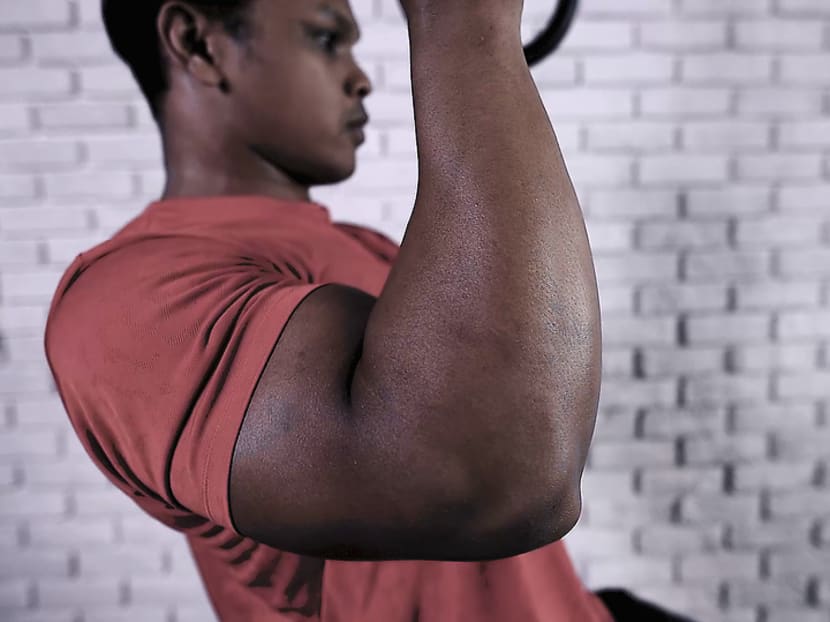Next-Level Workout: How to build bigger biceps and a stronger core
In this new eight-part series, CNA Lifestyle brings you trainer-certified moves to help you reap more results from your workouts.

(Photo: nonlinear)
American wrestler-turned-actor Dwayne Johnson called his guns Sledge and The Hammer Brothers in an E! News interview. But that’s The Rock.
For us mere mortals, the muscles that make up the biceps on each arm are anatomically known as the biceps brachii and brachialis. Of course, you could call them something else, if you wish – just don’t be obnoxious about it.
The powerhouse that lets you extend and curl your arm as well as rotate your forearm is the biceps brachii. It sits on the front side of the upper arm and is the showpiece when you flex. The brachialis, on the other hand, is a deep muscle that is solely responsible for flexing the elbow.
These muscles don’t need to be big, like bodybuilders’, to be strong.
Together, these muscles do more than make you look impressive. “Your biceps are engaged when you need to pull stuff, or lift something off the ground. Strong biceps mean you can carry heavier loads. But these muscles don’t need to be big, like bodybuilders’, to be strong,” said Shaik Humarhamdani, 31, head coach at Ritual Gym.
WATCH: Next-Level Workout: How to strengthen your back and improve your posture
COMPOUND MOVEMENTS
Bicep curls are the most common moves you’ll see being performed in the gym. The exercise is specific. It is targeted. But those qualities can also mean you can’t pull off many repetitions, said Shaik.
“The biceps, in themselves, are small muscles and they fatigue fast. If you focus only on working out the biceps, they will fail before you tire,” he said.

Fatigue aside, those impatient for muscle gains may over-exert themselves and suffer from torn bicep muscles, said Shaik. “That usually happens when you go heavy on the weights, or when you feel the need to hit a certain number of reps when you’re not strong enough to execute them.”
WATCH: Next-Level Workout: How to tone up your glutes and quads
To shake your bicep routine up, Shaik recommends gymnastic pull-ups. “This workout is a compound movement that works the whole body. You’re using your back and your abs. You’re building your core, which helps to improve your stability,” he said.

Shaik doesn’t prescribe repetitions and sets for this workout. “As a start, see how many reps you can do in 30 seconds. At the next session, try to add one more rep into the same time frame. That’s how you know if you’re improving,” he said.
“We would rather do two perfect reps than 20 half reps. It’s quality above quantity. Work on the form first, then work on the number of reps you can do.”
WATCH: How to sculpt defined shoulders and build your core
If you find yourself unable to increase the number of reps, even after weeks, you can still up the intensity of the pull-ups by slowing down the movement and pausing longer at the top of each pull-up, he advised.
Next-Level Workout is a fitness series from CNA Lifestyle. Consult your doctor before starting any training programme.





